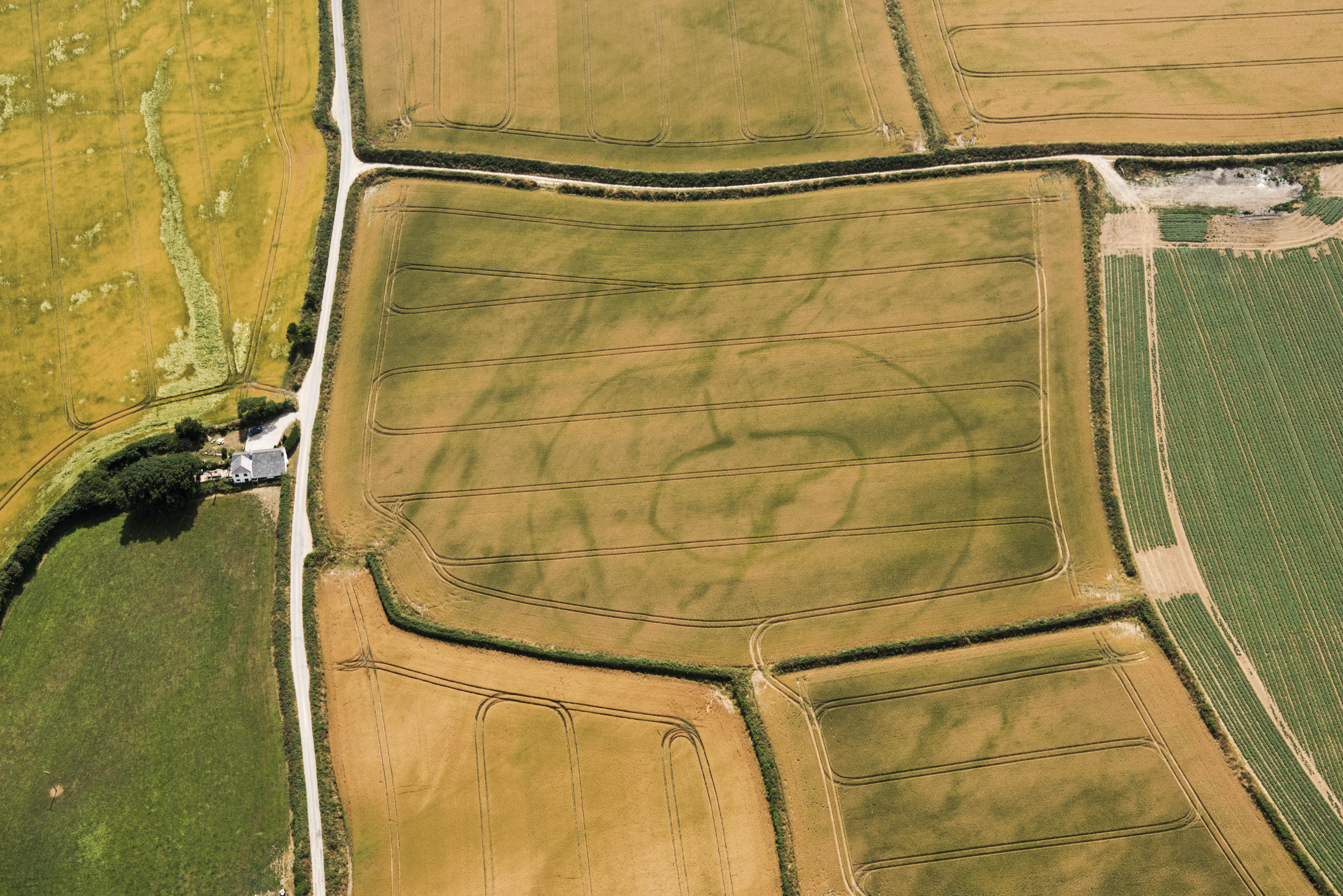Heat Wave Reveals Cropmarks of Lost Civilizations in England

This summer's unrelenting heat has helped to reveal hidden marks of ancient civilizations, including Neolithic monuments, Iron Age barrows, prehistoric settlements and ancient farms.
Archaeologists working with Historic England, a British historical preservation body, took to the skies to find hidden markings from past archaeological sites that typically become more apparent following dry soil conditions, according to a statement. These markings, called cropmarks, are outlines of buried structures.
"This spell of very hot weather has provided the perfect conditions for our aerial archaeologists to 'see beneath the soil,'" Duncan Wilson, chief executive of Historic England, said in the statement. [Photos: Heat Wave Reveals Cropmarks from Ancient Civilizations in England]
Vegetation grows much differently over structures, such as stone walls, than it does over soil, which can contain ditches or holes. Over ditches, the crops can be taller, their roots can be deeper and they can ripen a bit later than those growing over surrounding areas. Whereas over solid structures, crops can be shorter, the roots shallower and they can ripen earlier than surrounding areas, according to the statement. That results in fields tattooed with various shapes that give archaeologists a glimpse underground without requiring a shovel.
Two recently found, and seemingly mundane, rectangular cropmarks, for example, probably mark Neolithic cursus monuments, or long straight enclosures, that date to between 3600 and 3000 B.C., according to the statement. Though one rectangle was recently mapped as part of another project by Historic England, the other was hidden until now. Archaeologists don't know the purpose of cursus monuments, but one guess is that they were ancient processional paths.
By examining the shapes and layout, the archaeologists can also make educated guesses about the age of the hidden monuments.
For example, in Devon, England, the researchers pinpointed cropmarks in a grass field that depicted a central enclosure surrounded by traces of paddocks and fields. These types of settlements were common in the Roman period (43 AD - 410AD), so the archaeologists suspect the farm is a relic of that time. Meanwhile, farms in Somerset each contained an oval feature in the center that may have been abandoned and eventually overlain by a rectangular settlement. These farms are typical of the Bronze Age (2500 BC - 800 BC) and the Iron Age (800 BC - 43 AD), according to the statement.
Get the world’s most fascinating discoveries delivered straight to your inbox.
In the hills of Yorkshire, the archaeologists found four squares that were likely Iron Age burial sites. These square barrows were made up of a ditch surrounded by a burial mound.
Some of the findings are a bit more difficult to untangle. In Cornwall, for example, archaeologists saw what was most likely multiple settlement stacked above one another. Here, they found round cropmarks that likely date to the Iron Age — settlements that include a circular bank and an outer ditch most likely with a round house inside. But in the same place, they also found rectangles and two ditches and aren't sure if the two types of structures are related. The same field also contains a barrow, likely from the Bronze Age.
"It has been fascinating to see so many traces of our past graphically revealed," Wilson said in the statement.
Originally published on Live Science.

Yasemin is a staff writer at Live Science, covering health, neuroscience and biology. Her work has appeared in Scientific American, Science and the San Jose Mercury News. She has a bachelor's degree in biomedical engineering from the University of Connecticut and a graduate certificate in science communication from the University of California, Santa Cruz.


